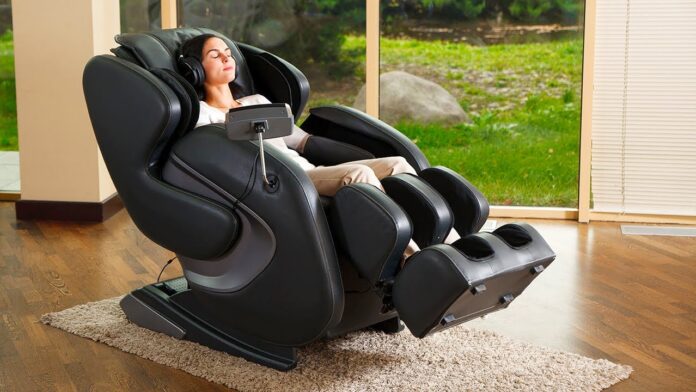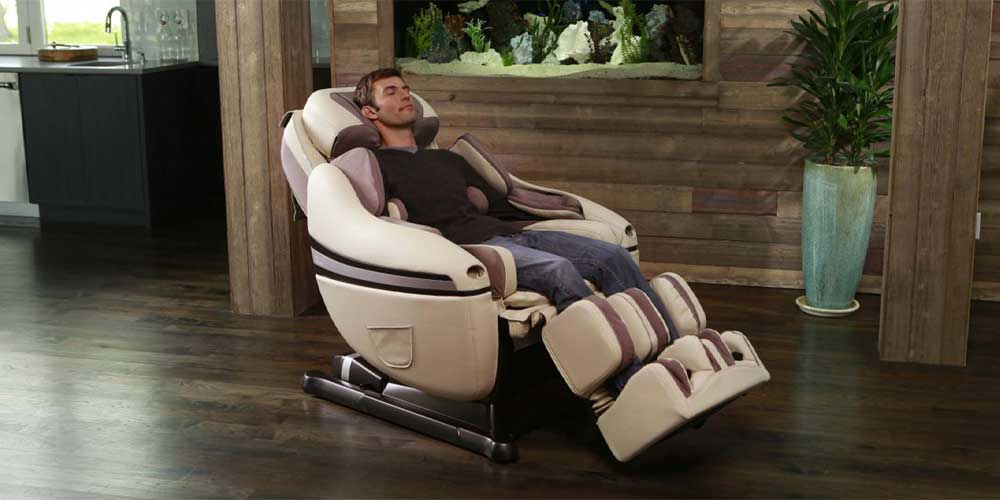Introduction
The word “massage chair” encompasses a wide range of goods, including vibrating recliners and medical gadgets that assess tension and suggest therapy.
So, how can you figure out which massage chair is right for you?
In this informative post by Ayako Inada, we’ll go through the many varieties of massage chairs, including massage types, track types, roller types, and more. In conclusion, you’ll have a better grasp of the basic components of massage chairs and a better idea of which chair will work best for you.
Massage Style
There are three basic massage components in a massage chair: rollers, airbags, and vibration. There are chairs that have one, two, or all three of these components.
Roller Massage
Rollers are possibly the most iconic aspect of a massage chair. They act as the massage chair’s “hands,” performing methods such as kneading and shiatsu. The rollers alter the muscular tissues as they massage. Massage therapy and the therapeutic advantages it provides are built on the foundation of muscle manipulation.
Air Massage
Another popular massage technique is air massage, which involves inflating and deflating balloons to pressure the body. Air massage is used to treat places that rollers can’t reach, such as the outer shoulders and hands, and is commonly seen on full body massage chairs. Advanced massage methods such as twists, swings, and stretches are also performed with airbags.
Vibration Massage
Vibration massage, on the other hand, employs high-frequency vibration plates to stimulate a region and improve local circulation. Massage chairs that solely provide vibration massage are often used for leisure purposes and are not meant to replace massage therapy.
Roller Tracks
However, you’ll need a massage chair with rollers to obtain any significant muscle advantages from it. There are three main types of tracks, or the mechanism that the rollers move along while they massage, in massage chairs with rollers. The type of track, as well as the range of the rollers, has a significant impact on the massage experience.
Straight Track
From top to bottom, a straight massage track is linear. Because they’re straight, straight tracks can lose touch and pressure in curved areas like the neck and lower back, which is why they’re often only found on low-cost or recreational massage chairs.
S-Track
S-Tracks are the solution to this problem. S-Tracks are fashioned like a “S” to mimic the natural curve of the spine and guarantee that the rollers remain in constant contact with the body. S-Tracks commonly run from the neck to the tailbone, depending on their length, which ranges from 24 to 32 inches. The most popular track type is S-Track, which may be found on any good massage chair.
L-Track
L-tracks are expanded tracks that continue into the seat of the chair where S-Tracks finish at the tailbone. L-Tracks increase the rollers’ range of motion by 15 inches or more, allowing them to treat glutes, piriformis, and hamstrings.
L-Tracks have gained in popularity since their debut due to the increased coverage and advantages they provide for patients suffering from sciatic nerve discomfort.
Roller Heads
The rollers themselves come in a variety of styles. 2D, 3D, and 4D rollers are the three types of rollers.
2D Roller
The number in 2D signifies the number of dimensional motions, while the “D” represents dimensions when referring to roller type. So far, we’ve learned that 2D rollers move in two directions: horizontally and vertically.
3D Roller
3D rollers move in three directions and have a third dimension of depth. The capacity of the rollers to extend from the track and penetrate deeper into your muscle tissues is referred to as depth. Another perspective is that 3D rollers allow you to regulate the intensity of your massage. Because 3D rollers allow you to tailor the pressure, they are suitable for both deep tissue and light massage fans.
4D Roller
All of the 3D dimensions movements are included in 4D rollers, as well as a fourth termed rhythm. The rollers in 4D adjust their speed (rhythm) to mimic the dynamic speeds used by a massage therapist. Instead of moving at the same speed during your massage, the rollers occasionally speed up or slow down to give you a more realistic experience.
Conclusion
Understanding the major components is the key to grasping the various sorts of massage chairs. Once you’ve decided on the massage technique, track type, roller type, amount of coverage, pricing, and other characteristics you want in your massage chair, all that’s left is to discover one that has those qualities.



















